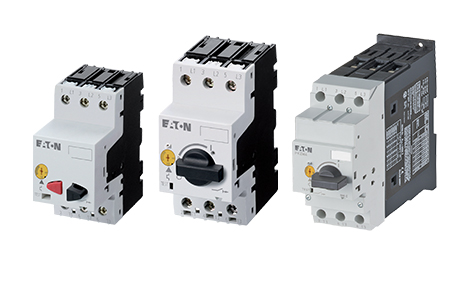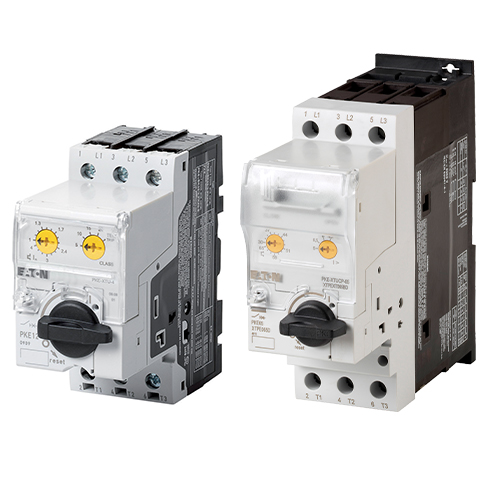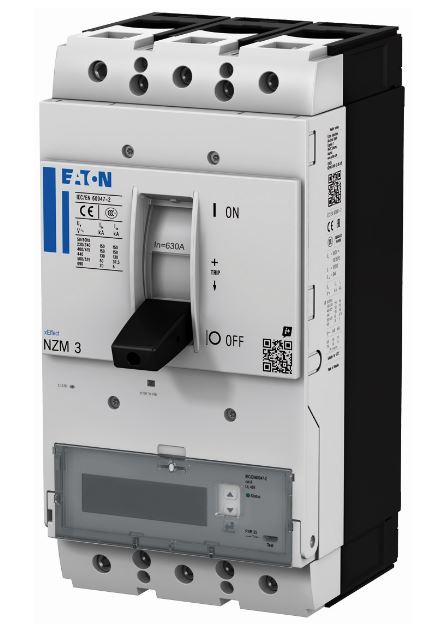Just a dozen or so years ago, only fuse links were used to protect people and equipment in electrical distribution systems and motor protection. Their basic function was protection against overcurrents, i.e. short circuits and overloads. Over time, the first automatic switches were created. These devices have definitely more advantages than fuse solutions.

In the case of an industrial processing line, motor protection is crucial to maintaining productivity and minimizing downtime. As the cost of fuse links is much lower than that of motor circuit breakers, fuse switch disconnectors were more commonly installed in the past. Nowadays, motor switches have been technologically developed and their prices have decreased while maintaining high competitiveness. As a result, the cost of the circuit breaker, compared to the savings resulting from minimizing losses generated during line downtime, is disproportionately low.
The following comparison of modern motor protection switches to fuse solutions shows how they can help machine manufacturers and workers maintain operations, increase safety and operational reliability while reducing costs.
Check motor switches at the Onninen wholesaler
Highest performance of motor switches
Over time, the performance of a fuse insert may deteriorate, even causing it to burn out under the rated operating conditions of the equipment. Since there is no way to test a fuse, it is impossible to know the exact amount of current that will cause it to blow. This is not the case with circuit breakers, which are tested during production and may be tested again during operation. Thanks to this, these devices provide the highest efficiency.
Increased work safety thanks to motor switches
During replacement or servicing, exposed contacts in fuses can electrocute technical personnel. If the appliances only use a fuse base instead of a fuse switch, the chance of electric shock is equally high. Of course, it is possible to cut off the voltage with a switch/disconnector before the fuse, if such a solution is included in the system architecture. Otherwise, it is necessary to disconnect the remaining devices on the main circuit. This, in turn, causes both equipment downtime and the resulting costs.
One of the most common causes of fires is replacing a fuse with the wrong model or rating. It even happens that a damaged fuse is replaced with an ordinary wire. The use of circuit breakers allows you to avoid such errors. After checking the cause of the voltage release in the circuit, the device can be restarted. Replacing fuses not only takes more time than simply reconnecting the breaker, but it also increases the risk of electric shock during service work. Circuit breakers help minimize downtime and increase staff safety.
Circuit breaker - extended motor protection
The breaking capacity of a circuit breaker can be significantly greater than that of equivalent fuses (up to 150 kA). In conditions of circuit overload, the circuit breaker can operate up to approx. 1000 times faster than the fuse link. Some circuit breakers provide unique short-circuit current limitation that was previously only associated with fuses. All this ensures reliable protection, reduces aging and extends the life of the device.
Please note that in three-phase devices, fuses often blow out in only one of the three fuse links. This forces the motor to continue operating on the remaining two phases, which leads to the motor operating in overload. In the case of a circuit breaker, a similar phenomenon is impossible. The device always interrupts all three phases simultaneously. In addition, industrial motor switches will trip in the event of a power failure in one of the phases, in accordance with the VDE 0660 standard, part 102. The motor current in this case will be distributed over two circuits of the circuit breaker instead of three and will be much higher on them. The resulting asymmetry will cause the release to be activated. Fuse solutions do not have this function.
Check motor switches at the Onninen wholesaler
Cost savings in industry
The cost of a single fuse link is much lower than the cost of a circuit breaker. However, if we consider the total cost of installation, there are other costs that need to be taken into account:
- for a three-phase circuit, three fuse links are needed, and each such set should include at least the cost of a base or a more expensive fuse disconnector,
- unlike circuit breakers, fuses do not have any built-in switching capacity, therefore it is necessary to add a disconnector before: a fuse base or the use of a fuse disconnector,
- when one of the three fuses blows, replace all three. This requires having a stock of replacement fuse inserts.
When these expenses are added up, the total cost of using fuse inserts may be higher than that of a circuit breaker.
Greater functionality of motor switches
One of the most important advantages of motor switches is the possibility of extending them with additional functions. For example, built-in protection against ground faults. Motor switches, with their compact size compared to fuse solutions, can be expanded with a wide range of useful accessories, including:
- auxiliary contacts indicating the device position (ON/OFF),
- trip indicators (indicate its cause – short circuit/overload),
- connecting bridges speeding up assembly work,
- special service handles that can be locked with a padlock,
- external handles for the facade, etc.
Do you have questions about the industry? Join the Świat Instalacji group!
The most advanced motor switches enable remote control of the device, measurement of rated currents, power and energy, as well as network communication via various Modbus/SmartWire/Profibus interfaces. Thanks to this, motor switches become IoT devices and can be part of the Industry 4.0 system.
Eaton motor switches
Eaton is a leading manufacturer of motor switches. The offer of these devices can be divided according to rated currents and types of releases, and thus functionality.
PKZ motor switches
Up to 65A, PKZ motor switches are available in 3 series:
- equipped with a PKZM0 rotary knob up to 32A, with a very high short-circuit capacity Icu = 150kA/400VAC,
- PKZM4 - equivalent to PKZM0 up to 65A,
- in the version with PKZM01 buttons up to 25A.

All the above series are equipped with thermomagnetic releases, i.e. with an overload and short-circuit element. These devices operate in the 10A trigger class, i.e., for example, at 6 times the rated current that occurs during start-up, they "hold" the current for 10 seconds without automatic shutdown, and at the same time operate correctly under the rated engine operating conditions. Accessories for all series are common, which helps minimize inventory.
The most popular accessories for PKZM devices are:
- NHI-E front and NHI side auxiliary contacts,
- voltage releases: shunt A-PKZ0 and undervoltage U-PKZ0,
- AK-PKZ0 service handle with the option of padlocking in the OFF position,
- BK25/3 power supply block and B3.0-… mounting bridges for quick power distribution.
PKE motor switches
Up to 65A for more difficult and advanced applications, e.g. for engines with heavy starts and for higher customer requirements, PKE electronic motor switches are dedicated.
These switches come in 2 versions:
- advanced, with the possibility of network communication,
- standard, without this possibility.

The entire current range from 0.3A to 65A is covered by 8 devices: 3 bases: 12A, 32A, 65A and 5 triggers (instead of 28 devices in the PKZ series). The advantage of this solution is the possibility of using it for engines of various power without keeping large stocks. The device also has a second knob that allows you to adjust the trigger class from 5 to 20.
The advanced version with communication enables:
- reading the current motor current (without additional devices),
- reading information about the settings of the overload element Ir and the trigger class,
- ability to change the above settings remotely,
- prediction of thermal protection triggering based on the mathematical model of the motor (information about the time when it will be triggered in the event of motor overload),
- saving and archiving information about switching and status of the device (without additional contacts) as well as its releases and sources of these releases (without AGM), which enables quick diagnostics.
Motor switches NZM… - MX…
 For higher currents up to 1400A, Eaton offers a series of electronic motor switches NZM... - MX… (PXR20) and digital NZM... - PMX... (PXR25).
For higher currents up to 1400A, Eaton offers a series of electronic motor switches NZM... - MX… (PXR20) and digital NZM... - PMX... (PXR25).
Characteristic features of this series:
- PXR20 electronic protection block enabling wide adjustment of rated currents. For example, the 140A model has regulation from Ir=0.4xIn in the range of 56 - 140A,
- possibility of adjusting the trigger class by adjusting the tr time (start-up delay),
- possibilities of adjusting the instantaneous short-circuit element, e.g. 2 – 12 * In,
- thermal memory function that prevents the motor from turning on due to overload,
- PXR20/25 has full diagnostics via the Micro USB port and PXPM software with the ability to save trip values and information about the trip source,
- communication, e.g.: Modbus RTU,
- possibility of installing a relay module that can be programmed, e.g. for load shedding when the assumed rated current threshold is exceeded,
- PXR25 digital protection block for motor protection has a standard display and the ability to measure current, voltage, energy, etc.,
- PXR25 has a function that reads the status of the device and assists in carrying out and planning maintenance.
